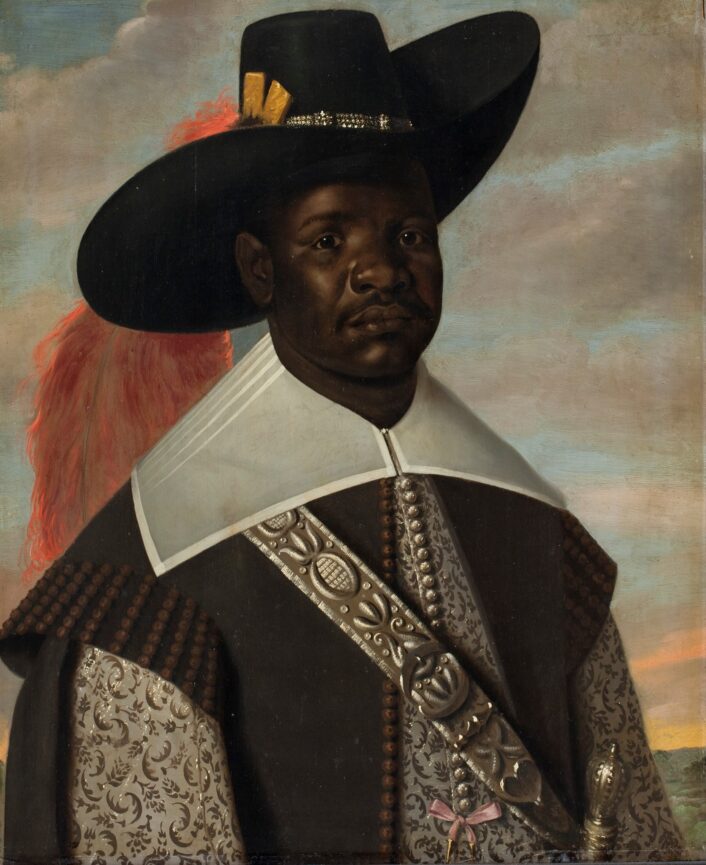Fine Art
Dutch’s Golden Age included others than just white subjects
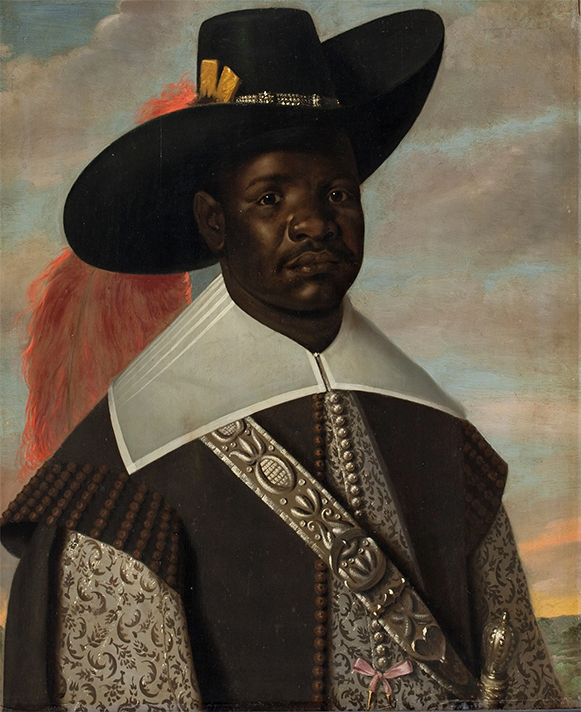
A portrait by Jasper Beckx of Don Miguel de Castro, 1643. The painting is on loan from Statens Museum for Kunst in Copenhagen.
Image courtesy of: The New York Times
The days of the 17th-century are often referred to as the Netherland’s “Golden Age”; however, the days were not golden for everyone. During this time, the Dutch were a major seafaring power, with maritime fueling fortunes back at home. One of the maritime businesses that brought wealth to people back at home was shipping slaves captured in Africa to the Americas.
The Dutch took control of the transatlantic slave trade from the Portuguese in the 1630s. Nevertheless, both French and British traders rapidly realized how profitable this industry was… and they quickly got into the market. It was during this time that the English fought two wars with the Dutch in order to gain supremacy in the transatlantic slave trade. The Dutch were outpaced in this horrendous industry; however, they still managed to send roughly 65,000 people to America and into slavery.
This sad topic proved to be a prominent subject matter for Dutch painters such as Rembrandt. The question is: were the black people actually depicted “servants” or slaves… and what is the story behind the portraits?
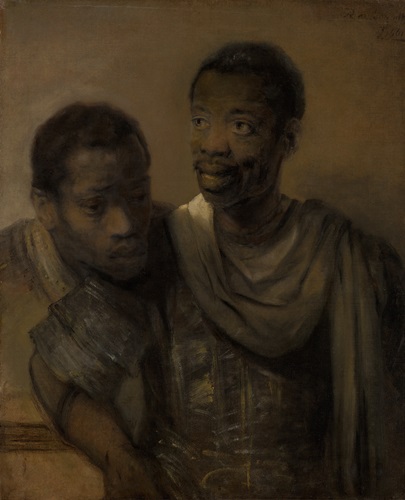
Rembrandt’s “Two African Men”, 1661.
The men were painted in a very thin layer of paint. The faces are shown in great detail (as is the white shawl) but the other parts are only slightly painted. It looks like an unfinished painting, although it was signed to prove completion.
Image courtesy of: Mauritshuis Museum
Recently, there was an exhibit at Amsterdam’s Rembrandt House Museum titled, “HERE: Black in Rembrandt’s Time.” The exhibition is a result of four years of research and investigation by Stephanie Archangel. Born in Curacao and a sociologist by training, Archangel spent years trying to find paintings with people who “looked like her.” She was particularly intrigued by “Two African Men”, a Rembrandt painting of two distinguished men in Roman-style costumes that hangs at the Mauritshuis Royal Picture Gallery at The Hague.
On the museum’s website, the description shows “free men who lived in Amsterdam.” Rembrandt’s portraits looked “human and worthy.” Archangel said, “It was the first time I saw black people in the 17th century painted by a Dutch master looking proudly back at me. I was wondering if that was true or not, or if it was my imagination, or just my hope to see that kind of proud representation.” Now a junior curator at the Rijksmuseum in Amsterdam, Archangel worked with Elmer Kolfin, an art history professor at the University of Amsterdam, to find those overlooked images from the Dutch Golden Age.
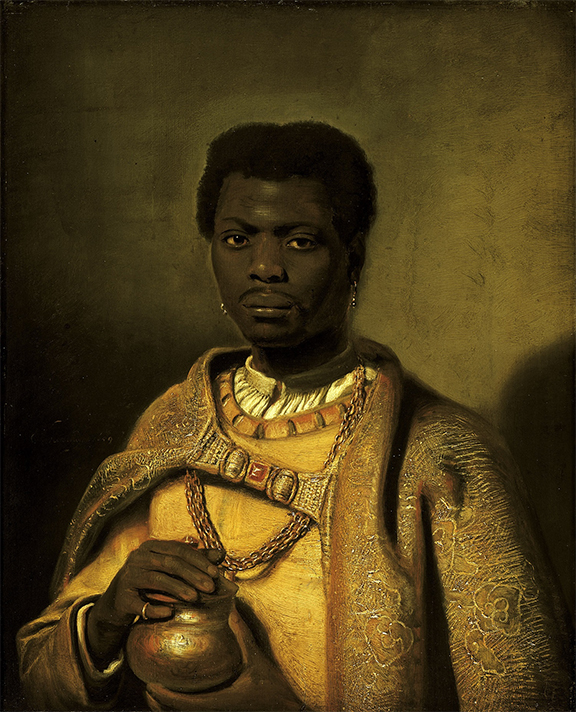
“King Casper” by Hendrik Heerschop, 1684.
Image courtesy of: Dutch News
The exhibition features 56 paintings, prints, and objects including seven revered Rembrandts. The show’s curators focus was on images that presented “the many different roles that black people played in society, and the many different roles they played in paintings for artists.”
Although slavery was forbidden on Dutch soil, immigrant families brought over people of African decent to serve as their servants. Mark Ponte, a historian with the Amsterdam City Archives and the lead researcher for the Rembrandt House exhibition used marriage, birth, and death certificates to reconstruct a network of about 100 black people who lived in Amsterdam during Rembrandt’s time. He concluded that the women were mostly servants in homes of Sephardic Jewish families who came from Portugal and the men were mainly Brazilian sailors who worked in the shipping trade. All this lead to a simple fact… many of the subjects lived in what is now called the Jewish Quarter. This made it easy for them to serve as Rembrandt’s models because this is where he resided.
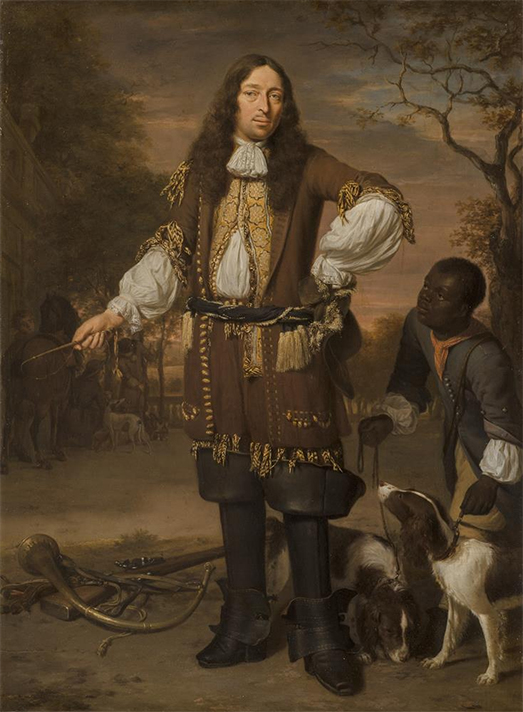
“Johan de la Faille,” by Jan Verkolje, 1674. Oil on copper.
Image courtesy of: WBUR
Evidence points to the fact that Dutch artists liked to paint what was in front of them.. and thus, the location of Rembrandt’s studio in the Jewish Quarter made it easier for him to connect with Amsterdam’s black residents. Rembrandt created at least 26 images of black subjects which include 12 paintings, 8 etchings, and 6 drawings.
Even though a fair amount of 17th-century paintings featuring black people exist, they were usually positioned either in the corner or in the background… always secondary. So when a painter featured a black figure as a central figure, it was typically be in a biblical role.
However, it is important to note that the “normal portrayal” of black people during these times was to showcase the status of the white figures since having slaves and servants was a sign of wealth and power. It is important to recognize that indeed, the critical mass pointed towards black people as secondary citizens.
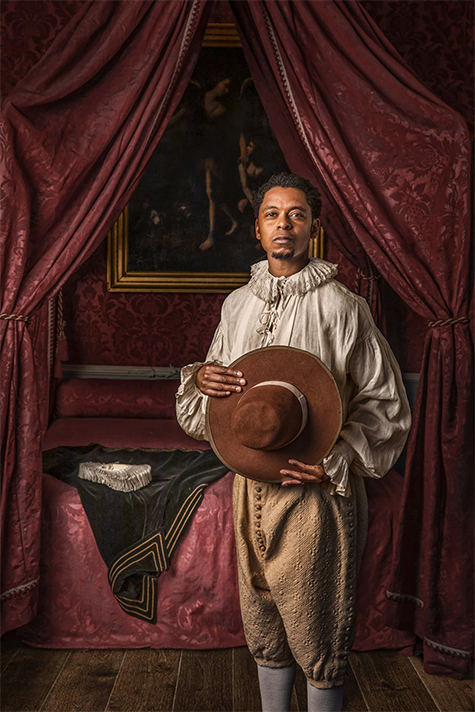
“Typhoon as Elieser” by Humberto Tan. The man here is dressed as a 17th-century servant.
Image courtesy of: The New York Times
We all know that it is hard to go back in history and reevaluate paintings, painters and subjects.
“Dutch Master Revisited” was an exhibition at the Amsterdam Museum meant to remind us that the term “The Golden Age” really just tells the story of the 1% of that society. The Dutch, like the rest of the world’s population, were struck by poverty, internal wars, and slavery. Thus, even though there are Old Master paintings which depict black subjects in dignified manners, that is not the whole story.
Margriet Schavemaker, the Hermitage Museum in Amsterdam’s artistic director said, “We believe that the Golden Age is, in a way, the story of the winners, and it hides the colonial past of the country. It hides slavery, but also it covers up poverty more generally. Not everyone participated in the Golden Age, not at all.”
